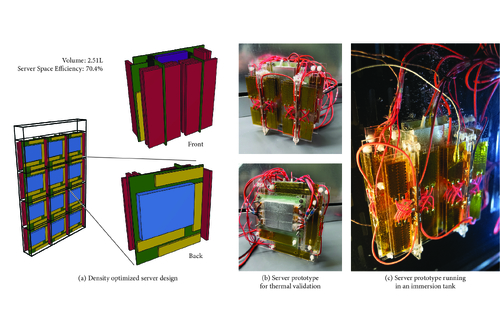Computational Design of Dense Servers for Immersion Cooling

DescriptionThe growing demands for computational power in cloud computing have led to a significant increase in the deployment of high-performance servers. The growing power consumption of servers and the heat they produce is on track to outpace the capacity of conventional air cooling systems, necessitating more efficient cooling solutions such as liquid immersion cooling. The superior heat exchange capabilities of immersion cooling both eliminates the need for bulky heat sinks, fans, and air flow channels while also unlocking the potential go beyond conventional 2D blade servers to three-dimensional designs. In this work, we present a computational framework to explore designs of servers in three-dimensional space, specifically targeting the maximization of server density within immersion cooling tanks. Our tool is designed to handle a variety of physical and electrical server design constraints. We demonstrate our optimized designs can reduce server volume by 25-52\% compared to traditional flat server designs. This increased density reduces land usage as well as the amount of liquid used for immersion, with significant reduction in the carbon emissions embodied in datacenter buildings. We further create physical prototypes to simulate dense server designs and perform real-world experiments in an immersion cooling tank demonstrating they operate at safe temperatures. This approach marks a critical step forward in sustainable and efficient data center management.
Event Type
Technical Papers
TimeTuesday, 3 December 20249:00am - 12:00pm JST
LocationHall C, C Block, Level 4







